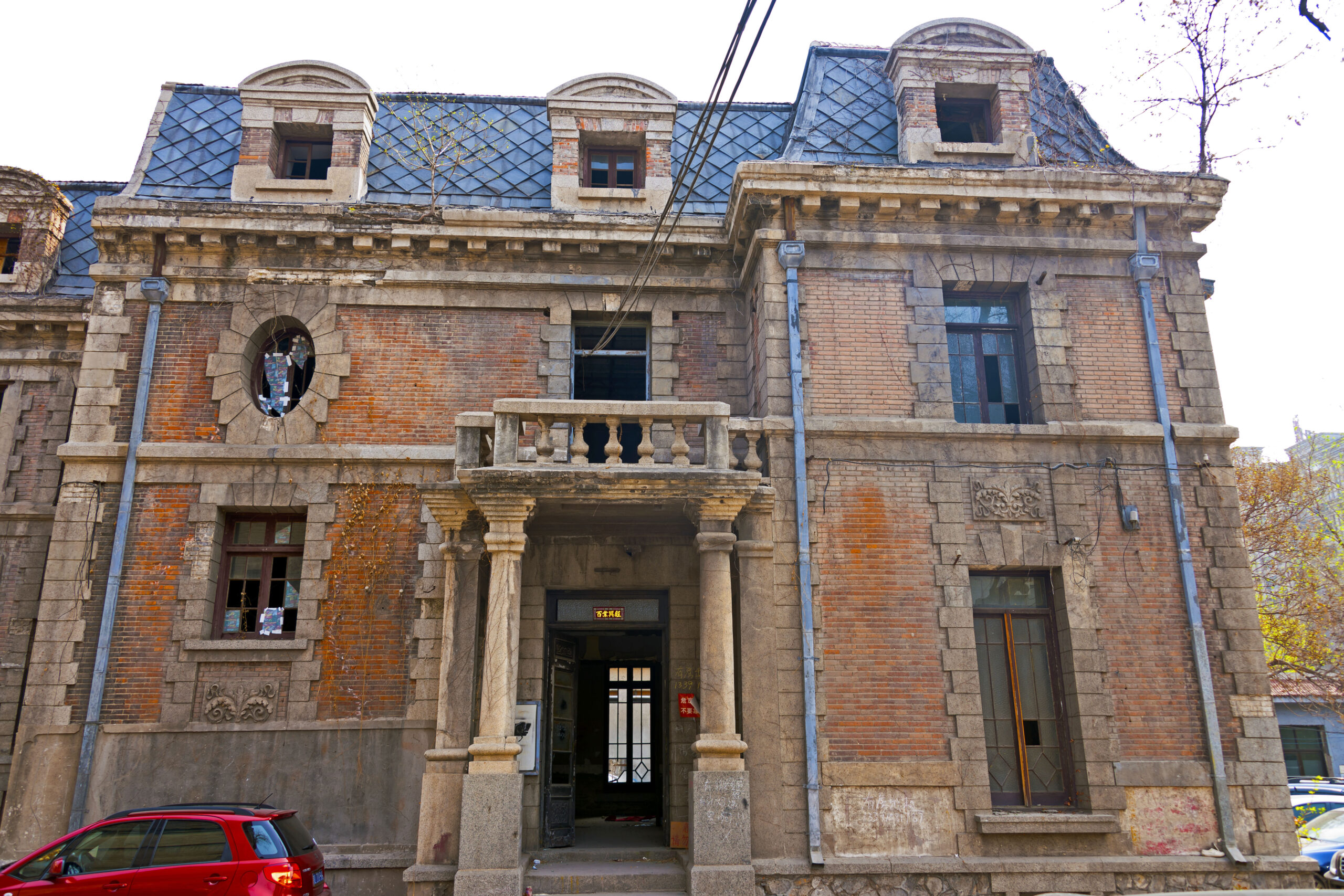Chaonei No. 81, alternatively referred to as Chaonei Church owing to its original function, holds a mysterious allure amidst the contemporary skyscrapers of modern Beijing and the ancient Buddhist temples dating back to the Ming dynasty. This architectural gem, boasting French-inspired baroque design, has been a focal point of intrigue throughout the 20th century.
Over the years, its occupants have varied, ranging from French railway managers and Christian missionaries to various officials of the Chinese Republic and even the Catholic Church. However, amidst these transitions, one persistent rumor continues to captivate imaginations: the chilling legend of a restless spirit unwilling to depart its confines.

The origins of the rumored haunted house at Chaonei No. 81 are shrouded in mystery, partly due to the lack of documentation predating the formation of the People’s Republic of China. Questions persist regarding its construction: was it built by a French railway manager, or was it perhaps commissioned by the Qing imperial family for British use as a church? While commonly believed to have been constructed around 1910, there are speculations suggesting it might even predate that era.
Nestled next to the neighboring hutong, the traditional streets of Beijing, Chaonei Church has garnered a notorious reputation for its haunted status. Even during the tumultuous Cultural Revolution in the 1970s, locals recount tales of how Red Guard members, temporarily housed in Chaonei Church, were so unnerved by their experiences within the purportedly haunted abode that they hastily vacated after only a few days.


The prevailing legend surrounding the haunting of Chaonei No. 81 centers on a woman who once inhabited the premises, her story steeped in tragedy and heartbreak.
According to local lore, this woman, believed to be either the wife or mistress of a Kuomintang (KMT) officer – the nationalist party of China – found herself abandoned when the nationalists were defeated and forced to flee to Taiwan during the Chinese Civil War of the 1940s. Allegedly left behind by her officer lover, who departed with the retreating army, the woman’s despair reached a tragic climax as she purportedly took her own life by hanging herself from the rafters of the house. This sorrowful tale is said to be the genesis of the unsettling presence that lingers within Chaonei No. 81, instilling fear in its occupants, including the Red Guard during the Cultural Revolution.


The circumstances surrounding the woman’s demise in Chaonei No. 81 remain a topic of debate. Some argue that it was not solely the outcome of the war that led to her tragic end, but rather the prolonged absence and neglect from the KMT officer, irrespective of the Communist victory.
The veracity of her existence itself is a contentious issue, given the tumultuous nature of the civil war era, where details are often lost, forgotten, or deliberately obscured. The absence of concrete documentation to either corroborate or refute the story adds to the ambiguity. Nevertheless, drawing from oral tradition, many who have spent time in Chaonei No. 81, familiar with its history, contest the presence of a KMT officer and dismiss the claim of a woman hanging herself there.
The history of Chaonei No. 81 remains veiled in mystery, with no unanimous consensus on a singular narrative. Yet, ghost stories possess a unique ability to transcend such uncertainties and embed themselves into the collective consciousness nevertheless. According to local lore, the haunting presence persists, with tales of her plaintive cries echoing through the empty halls, particularly on stormy nights, perpetuating the eerie aura surrounding the abandoned house.

The construction history of Chaonei Church is rife with peculiar tales, adding to the mystique surrounding the property. One such anecdote revolves around a British priest who purportedly initiated the construction of a church on the site but vanished mysteriously before completing the project. Legend has it that when a search party was dispatched, they stumbled upon a concealed tunnel leading northeastward to the Dashanzi neighborhood, further fueling speculation.
Moreover, there are unsettling accounts of three workers who were engaged in construction activities in the basement of a neighboring building to Chaonei No. 81, only to inexplicably vanish without a trace. Allegedly, these individuals, under the influence of alcohol, attempted to breach the thin wall separating the two structures in a bid to access Chaonei No. 81. However, they never returned, as per eyewitness reports.
In response to local beliefs in ghostly inhabitants, a sign has been prominently displayed at the entrance, dismissing such notions and advising against paranormal exploration of Chaonei Church.
.jpg/:/cr=t:0%25,l:0%25,w:100%25,h:100%25/rs=w:1280)
The release of the horror film “The House that Never Dies,” which drew inspiration from the haunted legends surrounding Chaonei No. 81, sparked a resurgence of interest in the property. Following the movie’s debut in 2014, crowds numbering up to five hundred people congregated outside the house, prompting the Catholic Church to intervene by closing the gates and permitting only a limited number of visitors inside at any given time.
This situation bears resemblance to the events surrounding Gonjiam Psychiatric Hospital, which faced a similar fate after a movie depicted its legendary hauntings. Eventually, due to the overwhelming influx of paranormal enthusiasts and concerns about the safety of the building, the entire structure was demolished.

In 2016, Chaonei No. 81 underwent extensive renovations, both inside and out, before being rented out. This rejuvenation effort might have been sufficient to dispel the lingering spirits and lessen the aura of folklore surrounding Chaonei Church. However, some still report feeling an eerie sense of unease when near the property. Even on scorching summer days when the sun beats down relentlessly, the entrance of the mansion inexplicably retains a cooler temperature than the surrounding shade, further contributing to its enigmatic allure.

